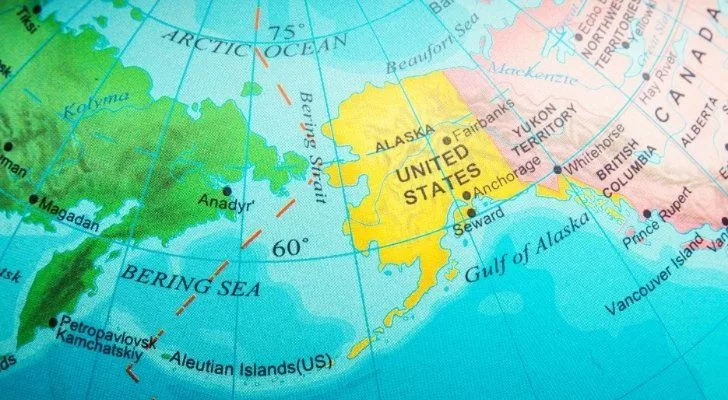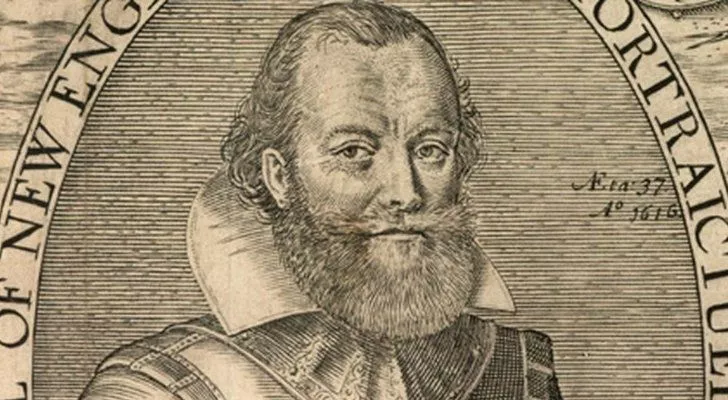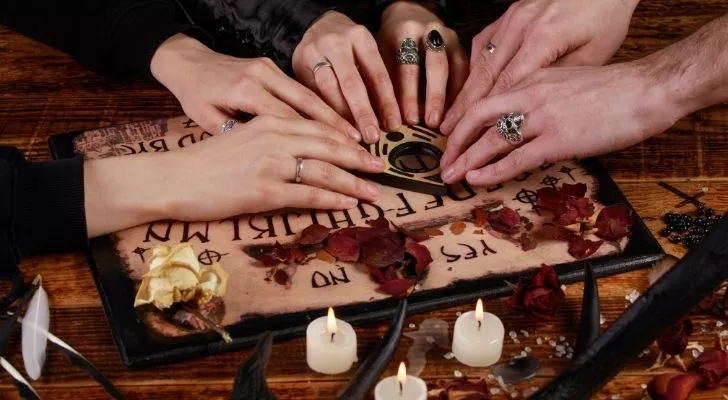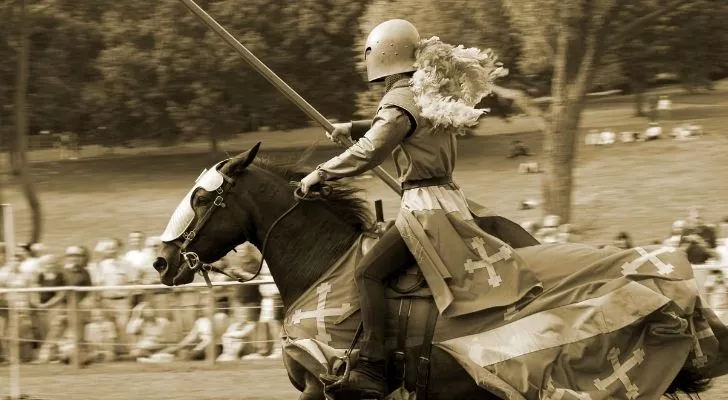In Maryland, there is a town called Boring which has 40 houses, a church, a Post Office, a fire company, and not much else.
Maryland, also known as the “Free State,” “Little America,” and “America in Miniature,” is the 7th state to join the United States of America on April 28, 1788.
It has a population of 6,045,680 people (as of 2019), making it the 19th most populous state.
Maryland shares its borders with West Virginia, Virginia, Delaware, and Pennsylvania.
It is the 42nd largest state covering a total of 12,407 square miles (32,133 square kilometers) of land and water.
The State’s capital is Annapolis, located in the center of Maryland.
Although, we are not here to learn about fast facts, we are here to explore some fascinating facts!
- Maryland has been inhabited for over 12,000 years!
- The British were the first Europeans to explore Maryland.
- The Colony of Maryland was established as a safe haven for Catholics.
- Maryland was named after the queen of England.
- The Ouija board originated in Baltimore, Maryland.
- The official state sport of Maryland is jousting.
- FAQ
Maryland has been inhabited for over 12,000 years!

The first inhabitants of Maryland arrived at the end of the last Ice Age, around 10,000 BC. These people were hunter-gatherers who migrated to North America from Russia, across the Bering Strait.
They were semi-nomadic people and moved around the region according to the season and the availability of hunting.
In 1500 BC, these first humans began settling in villages along the coast, where they began to live off oysters and other shellfish found nearby.
By the year 1000 AD, over 40 different villages were spread over the region with a population of around 8,000, all speaking Algonquian.
The British were the first Europeans to explore Maryland.

John Smith, a legendary explorer, soldier, and governor, first set foot in Maryland in 1608. There had been previous expeditions by Europeans into the region in 1498 and 1524, but they just sailed past the mouth of the Chesapeake Bay before continuing onward.
John Smith was the first to explore and map the region extensively.
Smith’s maps were surprisingly well made considering the time he lived, and fortunately, have been preserved to this day.
The Colony of Maryland was established as a safe haven for Catholics.

George Calvert, the Baron of Baltimore, petitioned King Charles I for a charter for the territory of Maryland with the hopes that it would be a safe place for the often persecuted followers of the Catholic Church.
His request wasn’t granted before his death in 1632, instead of being granted to his son Cecil Calvert later that year.
Cecil Calvert attempted to follow in his father’s footsteps in the newly founded colony, enacting laws that protected religious freedom among Christian religions.
Despite the Calvert family’s intentions, Maryland today has a lower percentage of Catholics than the national average.
Maryland was named after the queen of England.

At the time the Maryland charter was written, King Charles I was the monarch of England.
His wife was Queen Henrietta Maria, known simply as Queen Mary in England, and the official story dictates that it was she who the colony was named after.
Some Catholic scholars argue that the colony of Maryland was not named after Queen Mary, but after Mary, the mother of Jesus Christ. The Puritans, a Protestant Church group who wanted the Church of England to be more Protestant, founded the capital of Maryland. They moved to the predominately Catholic colony and founded Providence, which later became Annapolis. The Puritans revolted against the colony and its government in 1650, but Maryland regained control in 1658 and continued its policy of religious toleration. Maryland gained one of its nicknames from the bravery of the Maryland Line troops during the American Civil War. Maryland played a key role in the war as a border state, ultimately siding with the Union. Maryland gained another nickname by rejecting Prohibition laws in 1923, after abolishing slavery in the state in 1864.
Hamilton Owens, the editor of the Baltimore Sun newspaper, came up with the term “Maryland, My Maryland” after the state rejected laws that would have prohibited the sale, purchase, and consumption of alcohol. Maryland is known as “America in Miniature” due to its diverse geography that includes pine groves, oak forests, sand dunes, rolling hills, and low marshlands. Although it lacks a desert, the state compensates with its abundant water sources such as the Chesapeake Bay, rivers, and streams. Maryland’s state song, “Maryland, My Maryland,” has questionable lyrics that refer to Abraham Lincoln as a tyrant and the Union as “northern scum.” Despite the controversy, the song became the official state song in 1939. HBO’s critically acclaimed TV show, “The Wire,” set in Baltimore, is considered one of the greatest TV series of all time. The first American saint, Elizabeth Ann Seton, lived in Maryland and founded the first Catholic girl’s school in the US. Lastly, Boring, an unincorporated community in Baltimore County with a population of just 40 houses, has nothing interesting to offer except for its Methodist Church, Post Office, and Volunteer Fire Company.
Despite its uninteresting name, Boring was actually named after a Postmaster named David Boring.
The Ouija board originated in Baltimore, Maryland.

The idea of communicating with the dead through a board with letters on it is an ancient concept.
The earliest versions of these in the US were called talking boards, and they gained popularity in the late 19th century.
Elijah Bond filed a patent for his own version of the board in 1890, and then his employee William Fuld improved upon it and named it an “Ouija Board” in 1901.
Fuld claimed he invented the entire concept, and his name became synonymous with Ouija.
Initially, Fuld claimed “Ouija” meant “good luck” in Ancient Egyptian, but later decided it was a combination of the German and French words for “yes.”
The official state sport of Maryland is jousting.

Maryland has more than one official sport, with Lacrosse as the state’s official team sport.
During its colonial days, Maryland was deeply divided on religion, despite being a supposed safe haven with laws on religious tolerance.
Later, during the American Civil War, Maryland was divided on the line between the United States and the Confederates.
Nowadays, the Chesapeake Bay divides the state in two.
FAQ
1. What is the origin of Maryland’s name?
Maryland was named in honor of Queen Henrietta Maria, the wife of King Charles I of England. The name was proposed by the colony’s first governor, Sir George Calvert, who was granted the land by King Charles I.
2. What is Maryland’s state bird?
Maryland’s state bird is the Baltimore oriole. This brightly colored bird is named after George Calvert, Lord Baltimore, who was the founder of the Maryland colony.
3. What is the significance of Maryland’s state flag?
Maryland’s state flag is one of the most recognizable state flags in the United States. The flag’s design is based on the coat of arms of the Calvert family, who were the founders of the Maryland colony. The black and gold design represents the Calvert family’s coat of arms, while the red and white design represents the coat of arms of the Crossland family, who were related to the Calverts by marriage.
4. What is Maryland’s state flower?
Maryland’s state flower is the black-eyed Susan. This bright yellow flower is native to Maryland and is often seen growing along roadsides and in fields.
5. What is the tallest building in Maryland?
The tallest building in Maryland is the 614-foot tall Transamerica Tower in Baltimore. The building was completed in 1973 and is one of the most recognizable landmarks in the city.
6. What is Maryland’s state sport?
Unlike many states, Maryland has not officially designated a state sport. However, lacrosse is often considered to be the unofficial state sport of Maryland. The sport has a long history in the state and is played at all levels, from youth leagues to professional teams.
7. What is Maryland’s state dessert?
Smith Island cake is the official state dessert of Maryland. This multi-layered cake is made with thin layers of cake and frosting and is a favorite dessert in the Chesapeake Bay region.
8. What is Maryland’s state crustacean?
The blue crab is the official state crustacean of Maryland. This delicious crab is a staple in Maryland cuisine and is often steamed and served with Old Bay seasoning.
9. What is the significance of Maryland’s state motto?
Maryland’s state motto is “Fatti maschii, parole femine,” which is Italian for “Manly deeds, womanly words.” The motto was adopted in 1874 and is meant to represent the ideal of chivalry, where men are expected to do great deeds and women are expected to speak eloquently.

Zayn Anderson is a prolific writer with a passion for uncovering the world’s intriguing facts. Armed with an insatiable curiosity, he delves into various subjects, from history and science to nature and technology.
